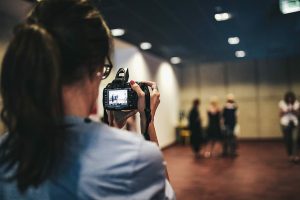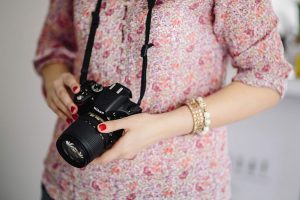We can say that being a war photographer is, more than a profession, a lifestyle. But it is not suitable for everyone, since it is perhaps the field of photography that most drains the professional both physically and mentally .
 Walter Astrada explained in a presentation at the Luces de La Rioja Festival how difficult it is to make a living from war photography. He gave as an example a project that he developed in Haiti, in which he received around € 200 for the photos published, having spent more than 3,500 in various expenses of the trip. As a possible solution to this, Pedro Armestre recommends having our own website on which to upload the works, and that they are interested in buying our images instead of trying to sell them ourselves. Furthermore, we never know the treatment that photography will have by those who are going to publish it. Our role will always be to document with the greatest objectivity of which we are capable what we have before us . Honesty above all else.
Walter Astrada explained in a presentation at the Luces de La Rioja Festival how difficult it is to make a living from war photography. He gave as an example a project that he developed in Haiti, in which he received around € 200 for the photos published, having spent more than 3,500 in various expenses of the trip. As a possible solution to this, Pedro Armestre recommends having our own website on which to upload the works, and that they are interested in buying our images instead of trying to sell them ourselves. Furthermore, we never know the treatment that photography will have by those who are going to publish it. Our role will always be to document with the greatest objectivity of which we are capable what we have before us . Honesty above all else.
There are several ways to go to the conflict zone ; as a freelancer, as a member of an agency, integrated into a battalion … In any case, nothing guarantees us to stay safe . The Army organizes the War Correspondents Conference every year, from which we work or not as media correspondents we can learn a lot.
Sometimes it will be beneficial for us to identify ourselves, other times it will put us under threat. It is always our decision to assess the circumstances. It goes without saying that the abandoned objects are the meat of explosives, or that before drinking water we have to boil it or use chloramine tablets to make it drinkable. These are very basic survival tips for every war photographer, but it never hurts to remember.
 Experienced professionals tell us how to surround ourselves with objects while driving so that, in the event of shots, they deflect the trajectory of the bullets. Essential is to control the language minimally, as well as to always carry with us what is essential to survive. Having a knowledgeable contact on the ground can also save our lives. We can take the case of minefields as an example; Some are easily marked, but others have been marked with piles of stones or sticks by the local population and we will not easily notice these types of indications. Joao Silva , a well-known member of The bang bang club, lost both his legs to a mine in Afghanistan.
Experienced professionals tell us how to surround ourselves with objects while driving so that, in the event of shots, they deflect the trajectory of the bullets. Essential is to control the language minimally, as well as to always carry with us what is essential to survive. Having a knowledgeable contact on the ground can also save our lives. We can take the case of minefields as an example; Some are easily marked, but others have been marked with piles of stones or sticks by the local population and we will not easily notice these types of indications. Joao Silva , a well-known member of The bang bang club, lost both his legs to a mine in Afghanistan.
Point and apart deserves the moral issue. A deep psychological preparation is almost essential both before going, and on the way back from the trip. As Michael Christopher Brown recounted in an interview, “There was a feeling that their war (Libya) was also mine, because it was a battle for dignity and human rights […] The place and the people became a part of me. ”.
The dilemma facing the war photographer is known to all. James Nachtwey, told ABC “There are still traces of emotion that never go away.” He talks about the typical question that every war photographer has faced dozens of times in his career; How is it possible to worry about taking a photograph while people suffer and die? To which he replies that there is no simple answer; “You have to believe that you are there for a greater reason.” Fear is part of the war photographer’s daily life, it is something completely real.
